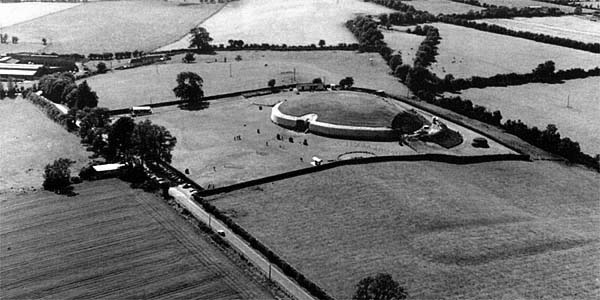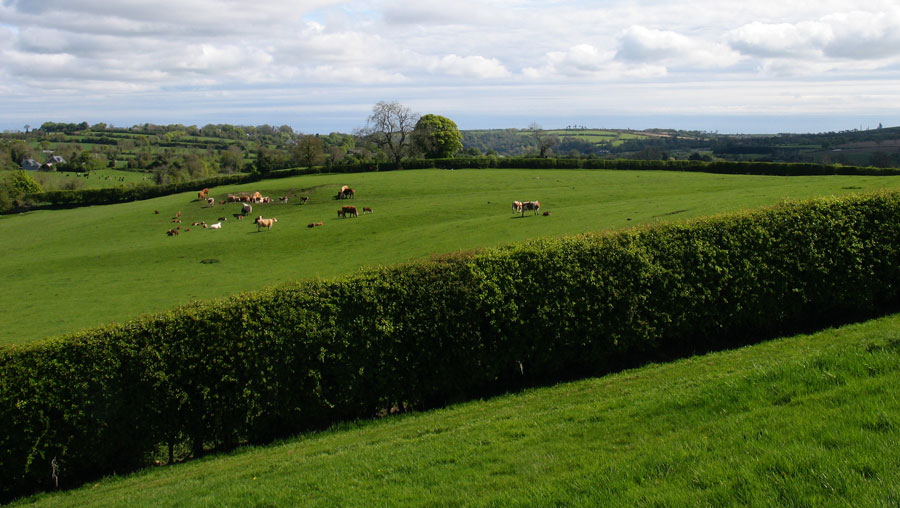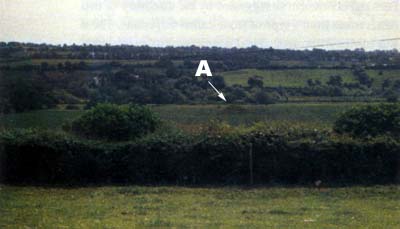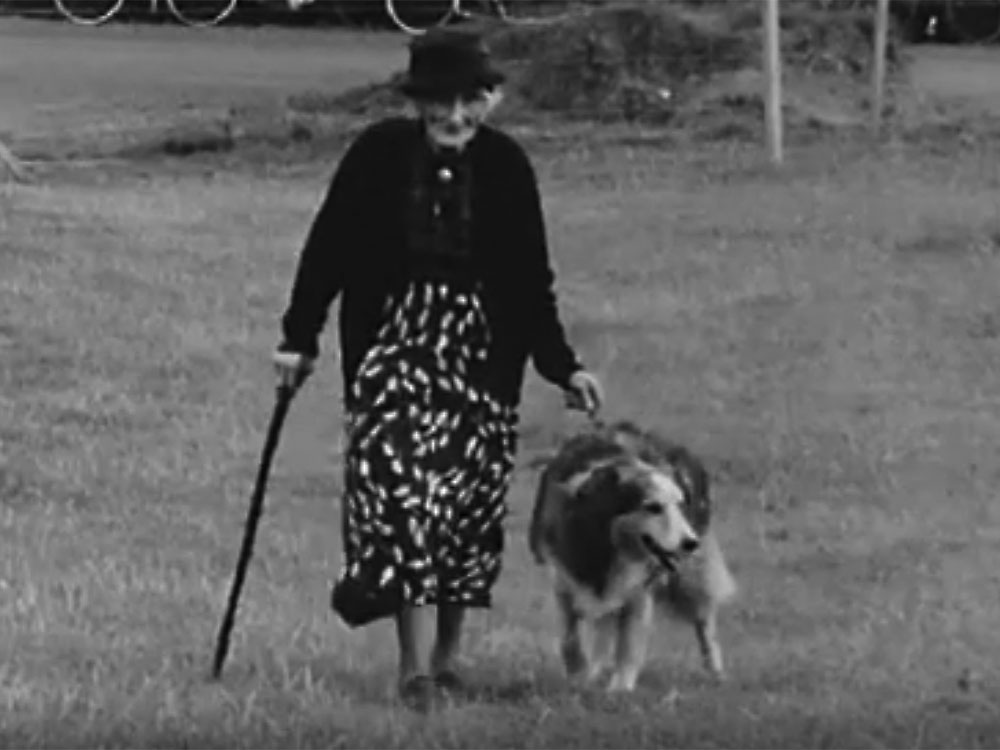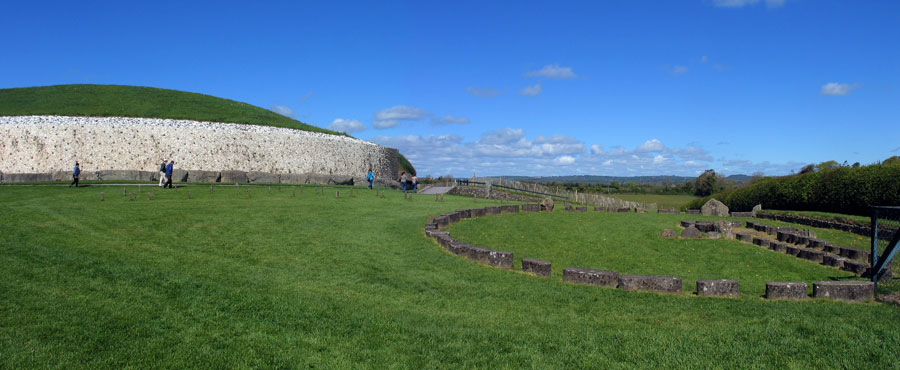The Newgrange cursus and the theatre of ritual
by Tom Condit.
Processions and processional routes are, even in modern times, part and parcel of religious festivals and events. Tom Condit describes how cursus monuments, formally laid-out ritual routeways controlling direction and views of the surrounding visual landscape, indicate that such processions also took place in the Late Neolithic period in Brú na Bóinne.
'Cursus' is the name applied to monuments, frequently identified as part of prehistoric ritual complexes, which consist of a pair of parallel banks and ditches defining a path or a routeway. The ends of cursus monuments are generally defined by rectilinear or U-shaped terminals Although it is one of the least visible monuments in the Brú na Bóinne complex the Newgrange cursus is one of the most exciting remnants of prehistoric ritual.
That Brú na Bóinne was not just a place for the interment of the dead is amply demonstrated by the presence of monuments dating to the Late Neolithic/Early Bronze Age, such as the henge monuments, the timber circles and, in particular, the Newgrange cursus. Such monuments tell us, from their shape and design, that they were used for gatherings.
In many instances archaeological evidence for the nature of the ceremonies that took place within the sites does not survive. However, the inward-looking amphitheatre effect of the earthen henges and the circularity of the timber circles suggest that gatherings and religious events took place in the interior of these sites.
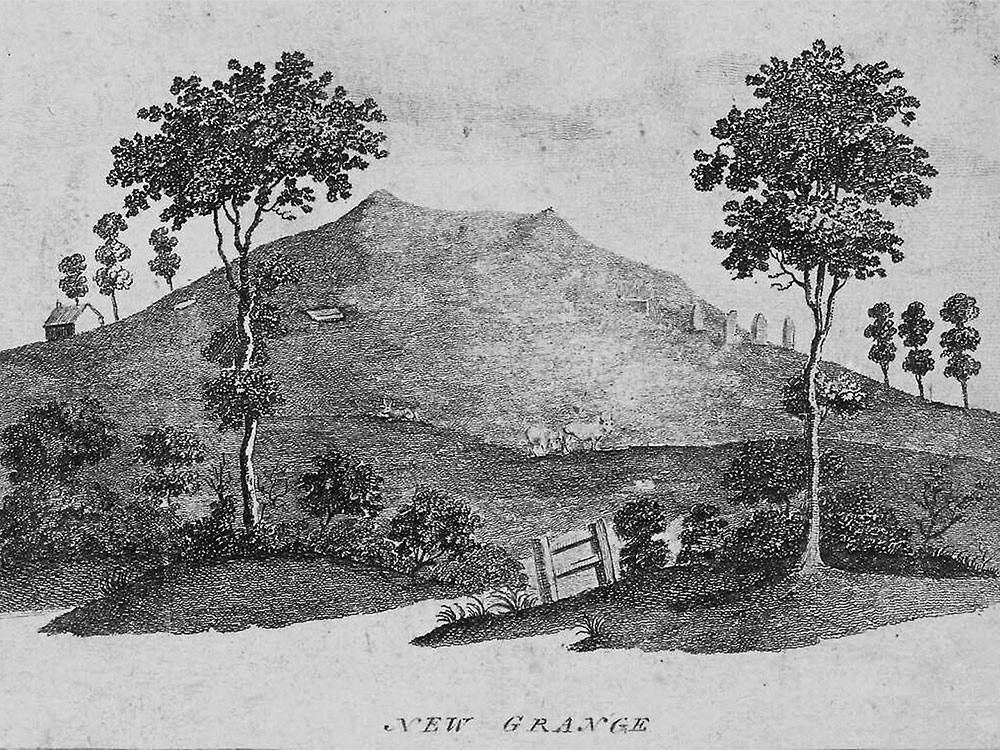
The cursus is slightly different in that it marks the route of a ritual procession through the landscape, revealing discrete sections of the landscape itself and highlighting monuments and other ritual sites. It would appear that such routes were designed with all the visual contrivances employed in modern architecture and design.
The Newgrange cursus, located c. l00m east of the great passage tomb on a north-south axis, consists of two parallel banks 20m apart, the southern end closed off by a U-shaped terminal.
Around l00m of the cursus survives - perhaps only a fragment of its original extent. There is no doubt that in its original state it would have been considerably longer. Its former extent may be fossilised in the orientation of modern field fences and boundaries on the north.
Where it survives, the cursus is sited on land sloping upwards on the Newgrange ridge. It would appear that considerable prehistoric activity took place at this location.
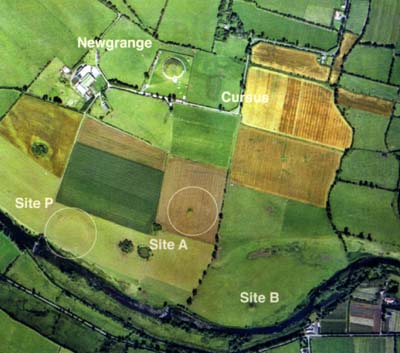
The cursus emanates from a now-dried-up pond formed by a small stream which runs east-west to the north of the Newgrange ridge. It seems likely that the cursus would originally have traversed the pond. The use of water in streams and ponds is likely to have had religious significance in the Late Neolithic period.
As one walks along the cursus, the horizon of the ridge dominates the view, with the profile of the Newgrange passage tomb clearly visible to the west. About halfway up the slope the horizon formed by the summit of the ridge is clearly visible.

